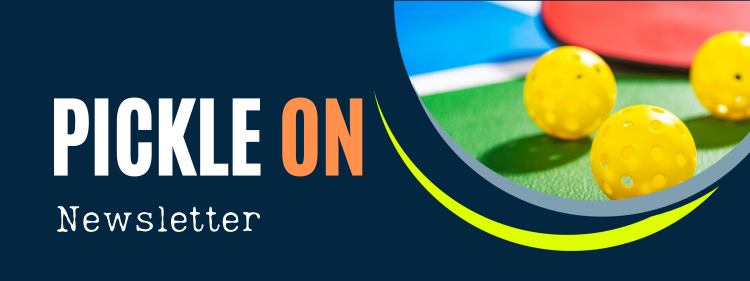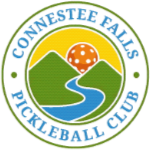
Happy January y’all!
It’s a might chilly out there, here’s to the hearty souls who head out to the courts anyway…you know who you are, we raise a cup of hot chocolate to you. ☕
Speaking of chili, the Chili Cookoff is upon us–mark your calendars and get yourselves to the Blue Ridge Lounge on Monday, January 29th at noon to taste and judge the different chilis! Remember, this isn’t a lunch, it’s a tasting. 😉
And if you’d like to enter your world famous chili into the mix, you have a day or two left to make the deadline (January 22nd). Please email social chair Betsey Merriken ASAP and let her know you’re entering. (bmmerriken55@comcast.net)
Every wonder why the third shot drop is such a big deal? Let’s talk about it!
Also, are you eating to fuel your game? Some ideas to keep your energy up!
And don’t forget to like and follow us on Facebook! LOTS of helpful hints, videos and all kinds of stuff posted daily to support you in your quest to be a better player: http://facebook.com/cfpickleballclub
See you on the courts!
Pickle ON!


If you’ve ever wondered why the third shot drop is a big deal, I hear you.
I used to think, WHY? It’s so predictable, wouldn’t it be better to drive it?
And the answer to that is it depends–sometimes a drive is what’s called for if your opponents return short or you just want to change it up.
But sometimes your drop shot is your fifth shot and what we’re going to discuss here today is the importance of good drop shots, whether it’s the third, fifth or just the right shot to make.
The classic third shot drop in pickleball is a strategic shot designed to help the serving team get to the net while making it challenging for the opponents to return.
There’s a right way to drop a ball and wrong way–you already know the wrong way if you’ve had your opponent put away your third so let’s go over the basics for executing a good third shot drop:
1. Soft Touch: The key to a successful third shot drop is a soft touch. You want to hit the ball gently to create a shot with minimal speed. Avoid using excessive power; instead, focus on control and finesse. Think of your drop as a big dink if you’re at the baseline or midcourt.
2. Spin: To make the ball drop effectively and bounce low, put a little something on the ball. The easiest is a little backspin and this is achieved by brushing the bottom of the ball with your paddle as you strike it. The backspin causes the ball to rotate backward, making it drop faster and bounce lower. Super frustrating for your opponent.
3. Arcing Trajectory: Aim to send the ball in an arcing trajectory over the net so it lands in the kitchen. The higher the arc, the steeper the angle at which the ball will descend into the opponent’s kitchen, making it possible for them to attack, so remember, this isn’t a lob, it’s a drop and drops don’t need to be high.
4. Clear the Net: Ensure that your shot clears the net comfortably but stays low enough to force your opponents to let it bounce. Hitting into the net will frustrate you endlessly, so practice your shot placement to consistently clear the net.
5. Landing Spot: Ideally, you want the ball to land in the middle your opponent’s kitchen. This makes it difficult for them to attack the ball aggressively or return it as a volley, plus can help confuse who will get the ball. Aim for a spot just a few feet from the net, preferably to the opponent who returned the serve as they’re moving and extra points if you get to their backhand.
6. Footwork and Positioning: As you hit the third shot, be prepared to move forward toward the NVZ. Good footwork and positioning are essential to take advantage of the opportunity to advance to the kitchen.
7. Practice and Repetition: You gotta drill this one a lot. Like any skill in pickleball, practice is crucial. Spend time on the court practicing your third shot drops to develop consistency and accuracy. A great game to play with your partner is Slinky where one of you stands at the net and the other one practices dropping the ball into the kitchen from the baseline, midcourt and kitchen–take turns and watch your drops improve!
8. Variation: Don’t be too predictable with your third shot drops. Occasionally, mix it up with other shots, such as a drive or a lob, to keep your opponents guessing and prevent them from anticipating your strategy.
9. Go Crosscourt. There’s a better chance of nailing your third shot going crosscourt as the ball is lower in the middle.
Remember that the third shot drop is a strategic shot that sets you and your partner up for success at the kitchen. By mastering this shot, you can control the pace of the game, gain a positional advantage at the net, and increase your chances of winning points in pickleball.
Don’t be a banger, remember pickleball has a lot of finesse and drops are definitely a part of a good pickleball player’s dance card.
Keep dropping it like it’s hot!

Eating the right foods before playing pickleball competitively for two hours is essential to provide your body with the necessary energy, prevent fatigue, and maintain focus throughout the game.
Here are some guidelines for your pre-competition meal:
1. Timing: Ideally, you should eat a bigger meal 2-3 hours before playing. This allows enough time for digestion and ensures that your body has access to the energy it needs during the game. If your match is early in the morning, consider a lighter meal 1-1.5 hours before playing.
2. Carbohydrates: Carbohydrates are the fastest source of energy for physical activity. Aim to include complex carbohydrates in your meal, such as rice, sweet potatoes, regular potatoes and even some kind of sturdy, whole grain bread. These foods provide a steady release of energy over time, holding you during play. The fiber is a bonus for your gut.
3. Protein: Protein helps with muscle repair and maintenance and as we get older, we need more than we used to. Include a moderate amount of lean protein in your pregame meal.
4. Healthy Fats: All fat is not created equal and healthy fats, like avocados, nuts, seeds, or olive oil, are essential for hormone regulation and thinking fast on your feet–your brain depends on fat to operate. Your brain is almost 60% fat and fatty acids from healthy fats determine your brain’s integrity and the ability to perform, including fast hand/eye coordination playing pickleball!
5. Fruits and Vegetables: Add fruits and vegetables to your meal for essential vitamins, minerals, and antioxidants. They can help with hydration and provide a range of nutrients for optimal performance, plus they provide the necessary fiber we all need.
6. Hydration: Start hydrating well before your match. Drink water throughout the day leading up to your game. Consider adding electrolytes to your water if you’re playing a lot, especially in the summer when you’re sweating.
7. Avoid Heavy or Greasy Foods: Steer clear of heavy, greasy, or overly spicy foods that may cause discomfort or digestive issues during play.That’s kind of a no brainer, but worth mentioning just in case.
8. Portion Control: Don’t overeat. Your pregame meal should be a little smaller than a normal meal OR you should have your normal sized meal at least 3 hours before your match.
Nutritional needs are different for everyone, so it’s essential to find a meal plan that works best for you and makes you feel comfortable and energized on the pickleball court. Just because a certain way of eating before a game works for your BFF doesn’t mean it will work for you. Make sure you customize your meals based on your own needs, no one else’s.
Pickle ON and make sure you do it well fueled!
